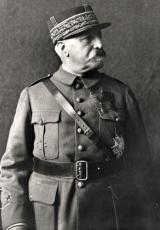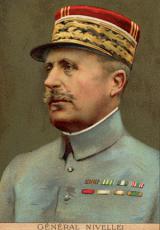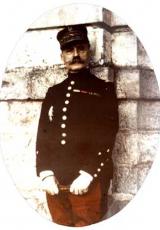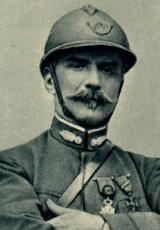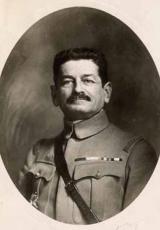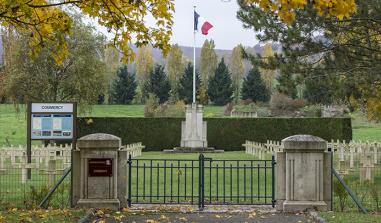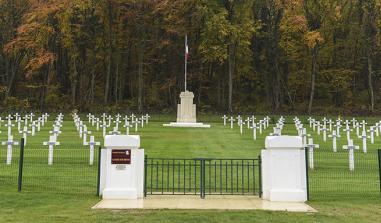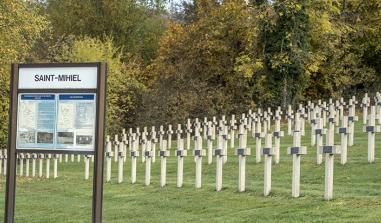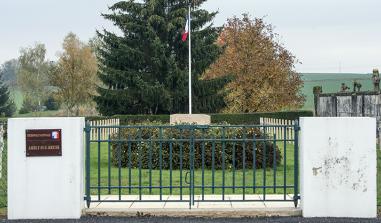Douaumont National Cemetery and Ossuary

Douaumont National Cemetery and Ossuary. © Kaluzko
Creation of the cemetery
The National Cemetery of Fleury-devant-Douaumont contains the remains of French soldiers killed in the fighting that took place in the Verdun area from 1914 to 1918, and in particular the Battle of Verdun. Created in 1923, the cemetery was developed until 1936. Once the site had been chosen, in 1923, the War Graves Department, with the aid of the Metz engineers’ regiment, levelled a plot of land of several hectares, where major clearance work had been carried out to recover any abandoned hardware and hazardous munitions.
Once the land was level, the avenues and graves were laid. In August 1925, the bodies buried in small cemeteries around Verdun were transferred to the right half. In November, the cemetery received the exhumed bodies from the disused Fleury cemetery. In October 1926, it received those from the Fontaine de Tavannes cemetery. Over subsequent years, as bodies went on being discovered in the “red zone” – up to 500 per month – they were laid to rest here, over half of them identified. The cemetery also received the bodies from the cemetery of Bois Contant.
In accordance with the Law of 29 December 1915, which instituted a perpetual resting place for servicemen killed in action, the cemetery contains over 16 000 bodies in individual graves, and a Muslim plot containing 592 graves. Of the 1 781 Muslim graves laid in plots or rows in 16 cemeteries, the largest plots are to be found at Douaumont, with 592 graves, Bras with 254, and Dugny with 201. Each grave is marked with a Muslim gravestone, engraved with the words “Here lies” in Arabic, followed by the name of the deceased. There is also a special burial plot for unknown soldiers whose bodies were discovered recently. Six French soldiers killed in the Second World War are buried here.
Historical information
The Battle of Verdun
Forty kilometres from the German border established in 1871, the village of Fleury-devant-Douaumont had a population of 422 in 1913. By September 1914, at the end of the First Battle of the Marne, the front line had reached the outskirts of Fleury and became entrenched to the north of the village. Located on the road between Verdun and Douaumont, at the heart of a major fortified position, in 1915 Fleury was naturally incorporated in the fortified area of Verdun, i.e. at the convergence between the two opposing armies.
On 21 February 1916, Operation Gericht, the brainchild of General Falkenhayn, was launched against the French positions. From February to December 1916, French and German troops fought one another in what was one of the most terrible battles of the Great War. From the outset of the offensive, the village came under severe bombardment, and was immediately evacuated. After the fall of Fort Douaumont, on 25 February, Fleury became particularly exposed to pressure from the enemy. Situated between the fortifications of Froideterre and Souville, it lay at the heart of the defence of Verdun.
By May 1916, the village was in ruins. After the loss of Fort Vaux, on 7 June, Fleury became decisive in the battle for Verdun. Fierce grenade battles took place here, giving the French considerable cause for concern. Between June and August, the village changed hands 16 times. In this fiercely contested sector, where the units engaged soon reached the limit of their strength, the French troops of the 128th and 130th Infantry Divisions vied with each other in audacity against the Bavarian guard and the elite units of the Alpenkorps. Stepping up the battering, the Germans were now no more than four kilometres from Verdun. On 11 July 1916, they captured the Fleury powder magazine, a munitions store dug out of the rock, ten metres below ground.
Yet the German impetus was halted, because the French soldiers had received orders to stand firm everywhere and counter-attack with whatever resources were available. At considerable human cost, the French clung to their positions and succeeded in defusing the pressure from the enemy. The ruins of the village were finally retaken on 18 August by the marsouins of the Colonial Infantry Regiment of Morocco, and were used as a base for the autumn offensives whose objective was to recapture the forts of Douaumont and Vaux.
There is nothing left of the village and surrounding farms. In 1918, the village of Fleury-devant-Douaumont was one of 12 villages in the department awarded the status of “village meusien mort pour la France” (Meuse village that died for France). After receiving an army citation in September 1920, the ruins of the village of Fleury were included in the “red zone”, over time becoming a key remembrance site of the Battle of Verdun.
The ossuary
Officially opened on 23 June 1929 by President Gaston Doumergue, the national cemetery was bound up with the construction of the Douaumont ossuary, since there had been no front-line cemetery here during the First World War. Dominating the cemetery, this imposing monument was erected on the initiative of Monseigneur Ginisty, bishop of Verdun. From as early as 1919, it was often impossible to attribute an identity, or even a nationality, to hundreds of thousands of remains found scattered across the sectors of the Verdun region. Monseigneur Ginisty, chairman of the ossuary’s committee, travelled throughout France and across the world giving talks to raise the funds needed to erect the final monument.
The first stone was laid on 20 August 1920 by Marshal Pétain, honorary chairman of the ossuary’s committee. The transfer of the bones from the temporary ossuary to the permanent ossuary took place in September 1927. It was officially opened on 7 August 1932 by President Albert Lebrun, at a ceremony attended by French and foreign dignitaries and a huge crowd of veterans, pilgrims and families of the dead and disappeared.
With its grandness and clean lines, this imposing structure was designed by Léon Azéma, Max Edrei and Jacques Hardy. The main body of the monument consists of a 137-metre-long cloister, with recesses housing the 46 tombs (one for each main sector of the battlefield, from Avocourt to Les Éparges) containing the remains of 130 000 French and German soldiers. In line with the cloister, above the main porch, stands a “Tower of the Dead” in the form of a lighthouse whose rotating beam illuminates the former battlefield. Rising to a height of 46 metres, the tower offers panoramic views and from it a two-tonne bell, the “Bell of Victory”, rings out at each ceremony.
Today, the monument is part of the Meuse landscape. For some, it resembles a sword embedded in the earth up to its hilt, with only the handle showing, serving as a lantern. For others, the tower evokes a shell, a symbol the industrialisation of this major battle of the First World War. Meanwhile, the cloister may evoke the soldiers’ heroic defence of Verdun, or embody the Verdun fortifications, against which waves of enemy attacks proved in vain.
Close to the cemetery are two other religious monuments. One, erected in 1938, is in memory of the Jewish soldiers who died for France in the First World War. The other, located in the commune of Douaumont and unveiled in 2006, honours the Muslim soldiers killed in that conflict.
At the foot of the main staircase, the remains of General François Anselin, killed in action on 24 October 1916, were buried in 1948. Assigned on request to the command of the 214th Brigade, he was mortally wounded by shrapnel while conducting operations in the Poudrière ravine aimed at recapturing Fort Douaumont.
Facing the cemetery, a plaque remembers the historic handshake between President François Mitterrand and Chancellor Helmut Kohl that sealed Franco-German reconciliation in 1984.
The complex comprising the National Cemetery of Fleury-devant-Douaumont and the Bayonet Trench is classed as a Major National Remembrance Site, in honour of the sacrifice made by French soldiers in the Great War at Verdun (1914-18).
Ossuaire de Douaumont
55 100 Douaumont
Tél. : 03.29.84.54.81
Fax : 03.29.86.56.54
Mail : infos@verdun-douaumont.com
Departmental Tourist Board
Tel.: +33 (0)3.29.45.78.40
Verdun National Cemeteries Department
13, rue du 19ème BCP
55100 Verdun
Tel.: +33 (0)3.29.86.02.96
Fax: +33 (0)3.29.86.33.06
Email: diracmetz@wanadoo.fr
Opening times
The National Cemetery of Douaumont is open to the public all year round.
Douaumont Ossuary is open to the public free of charge from September to November. 9 am to 12 pm and 2 pm to 5 pm / 6 pm - December: 2 pm to 5 pm -
Closed from 1 February to the February school holidays - March: 9 am to 12 pm and 2 pm to 5.30 pm - April to August: 9 am to 6 pm / 6.30 pm
Douaumont National Cemetery and Ossuary. © Kaluzko
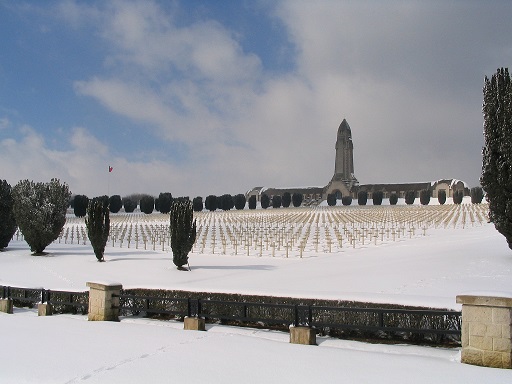
Douaumont National Cemetery and Ossuary. © DR
Douaumont National Cemetery and Ossuary. © Guillaume Pichard
Douaumont National Cemetery and Ossuary. © Kaluzko
Douaumont National Cemetery. © Guillaume Pichard
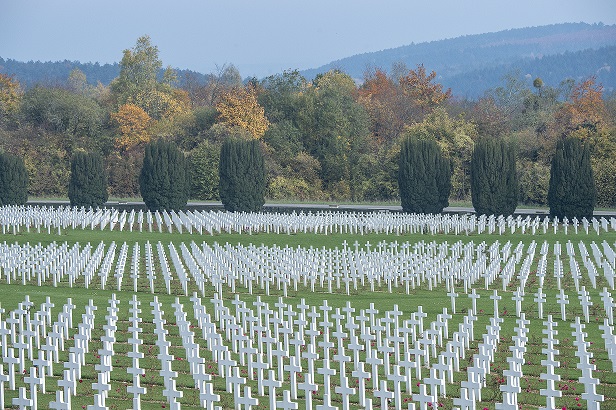
Douaumont National Cemetery. © ECPAD
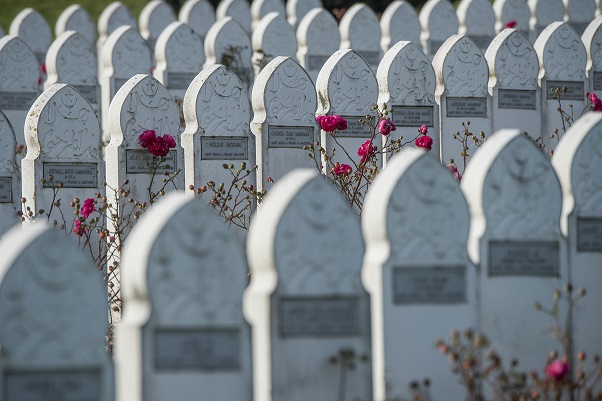
Douaumont National Cemetery. © ECPAD
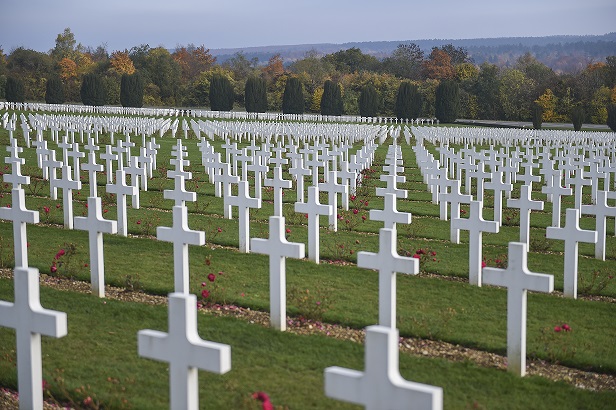
Douaumont National Cemetery. © ECPAD
Douaumont National Cemetery. © Guillaume Pichard
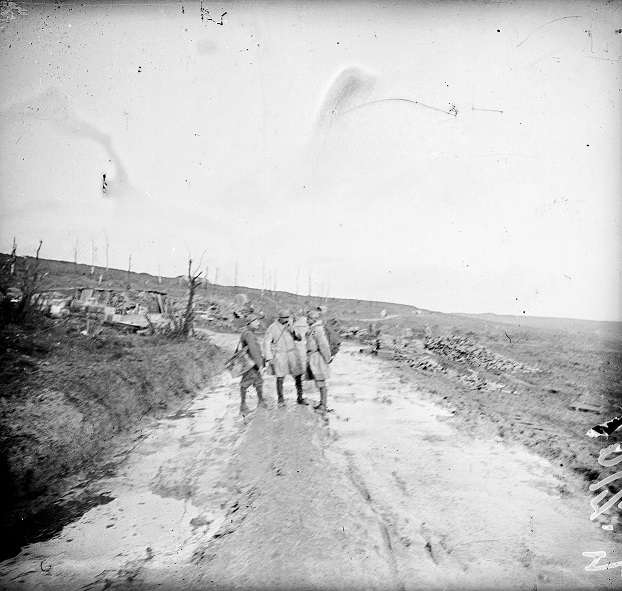
On the Verdun road, showing the site of Fleury-devant-Douaumont in the distance, 24 December 1916. © ECPAD
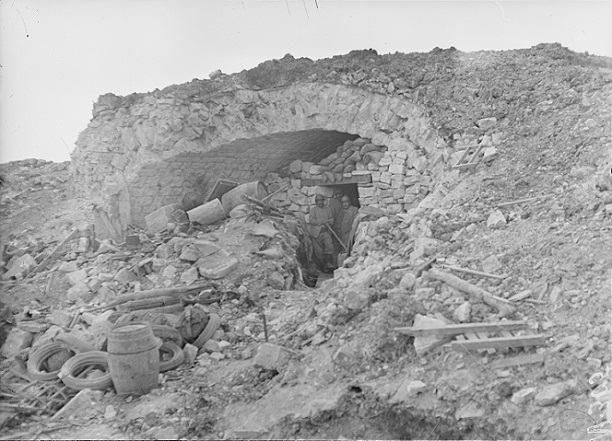
The Fort Souville Observatory. Located to the northeast of Verdun, following the fall of Fort Douaumont, Fort Souville became one of the key positions in the French lines of defence. Over 38 000 shells fell on the fort, destroying a large part of its unaltered structures. © ECPAD/Pierre Pansier, July 1916
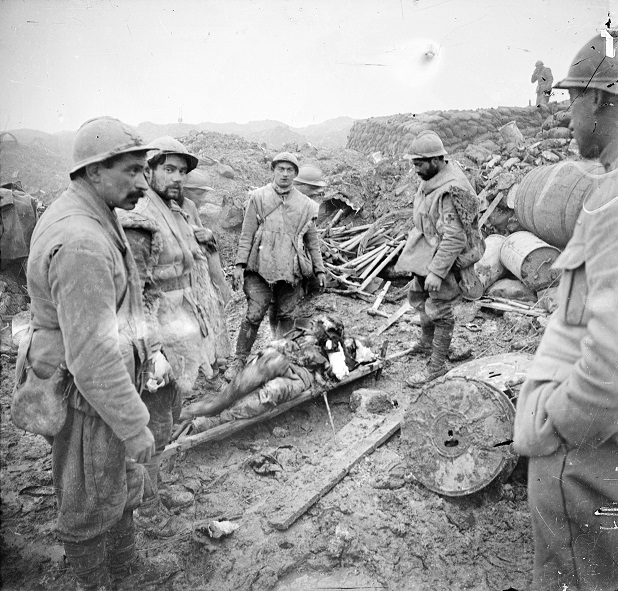
Transporting a wounded soldier from the front line, 22 December 1916. The mission of the medical service was to round up the walking wounded or to dispense first aid to the wounded on the battlefield and evacuate them from the line. © ECPAD
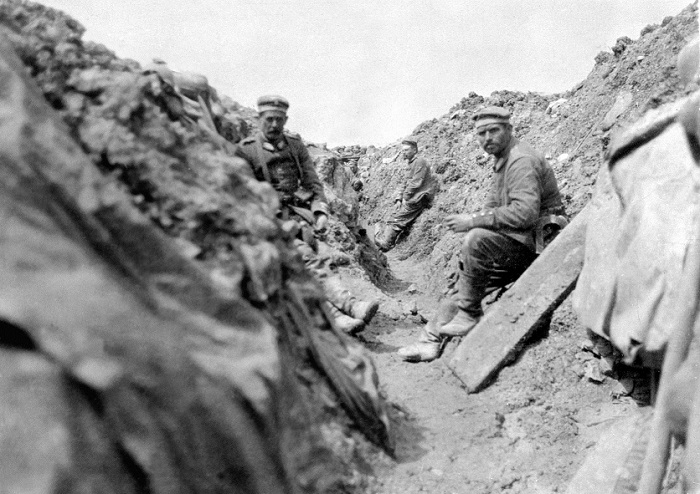
German soldiers inside a trench at Douaumont. © ECPAD
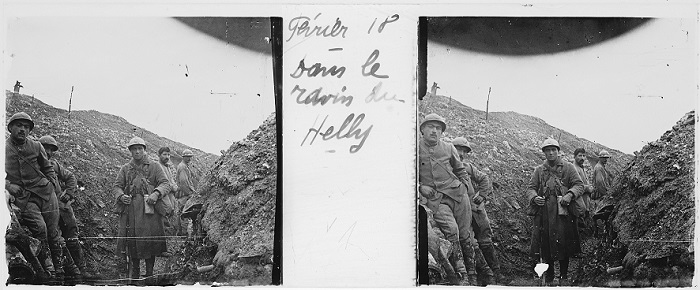
French troops in position in the Helly ravine, February 1918. © ECPAD / Donated by Louis Soulié
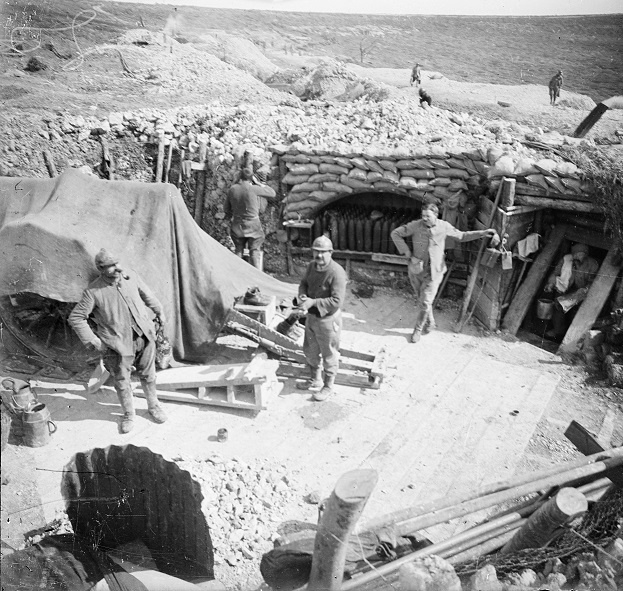
De Bange 155 mm long cannon in position before Fleury-devant-Douaumont, March 1917. © ECPAD / Albert Samama-Chikli
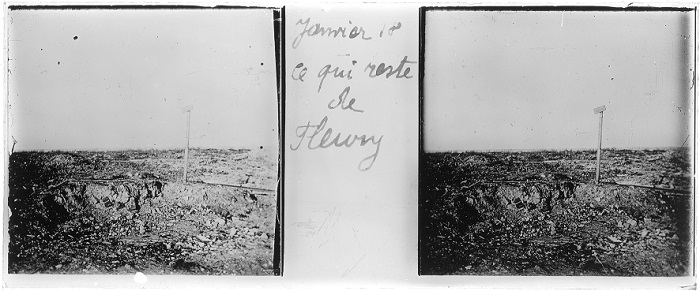
Ruins of the village of Fleury, 12 January 1918. The sign shows the site of the former village of Fleury-devant-Douaumont. © ECPAD / Donated by Nicolas Boncompain, great-grandson of Louis Soulié
Practical information
55100
Douaumont
03 29 84 54 81
September to November: 9 am to 12 pm and 2 pm to 5 pm / 6 pm. December: 2 pm to 5 pm. March: 9 am to 12 pm and 2 pm to 5.30 pm. April to August: 9 am to 6 pm / 6.30 pm
Closed from 1 February to the February school holidays



